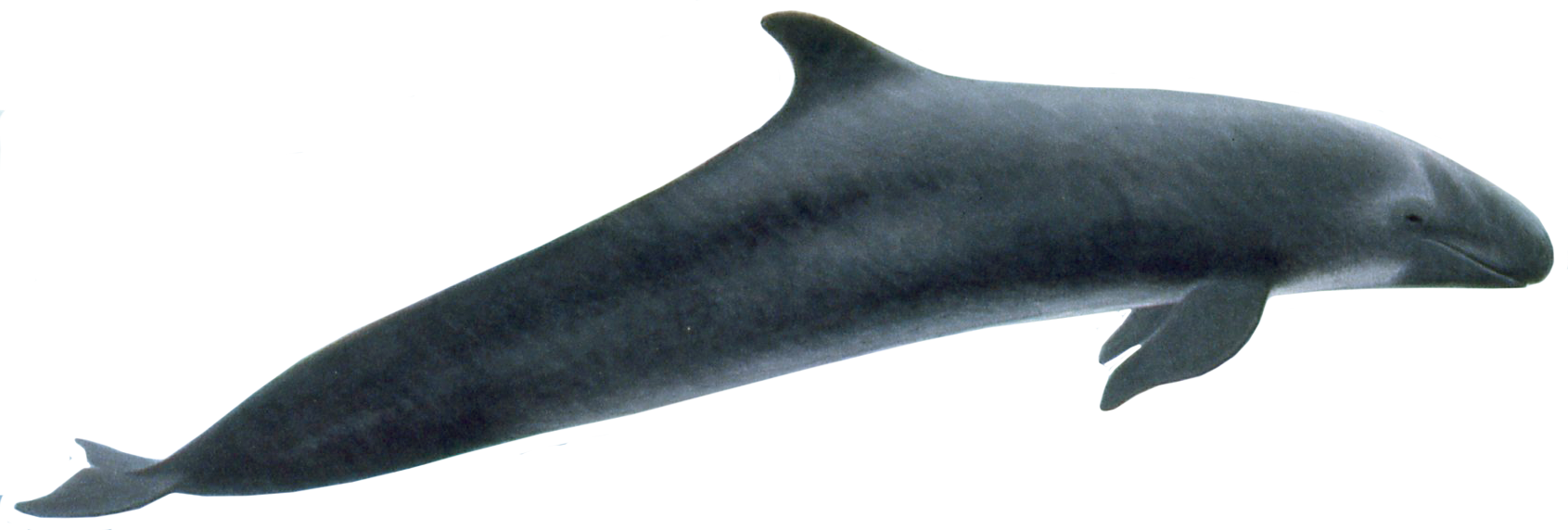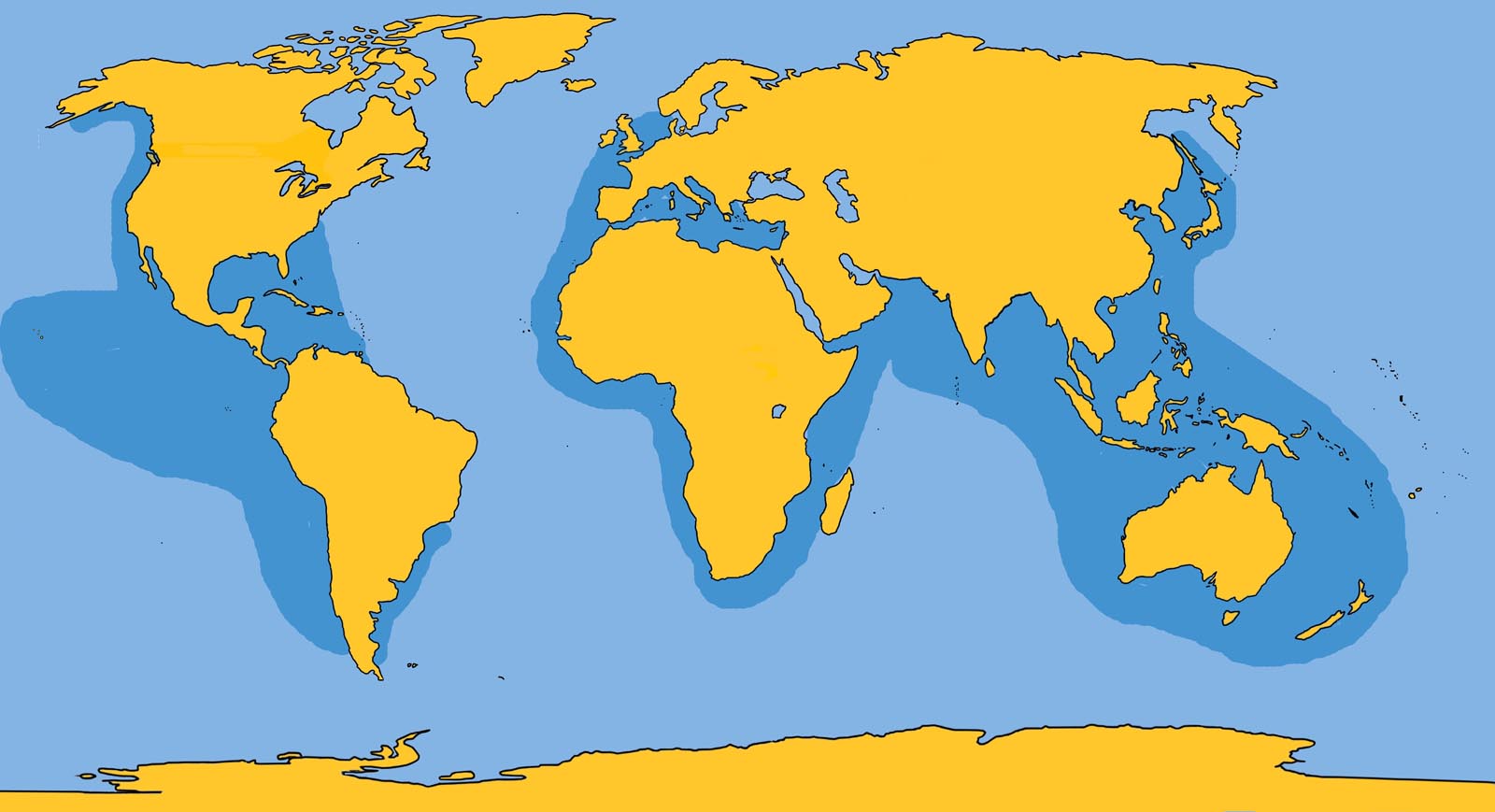Family: Delphinidae
Genus: Pseudorca
Species: P. crassidens (Owens, 1846)
The false killer whale — one of the largest dolphins — has proven intelligent and responsive in captivity. In the wild it is one of several species known to beach themselves, or strand, in large numbers. The phenomenon of stranding is poorly understood. The act cannot be called suicide, since there is no way to establish that the animals actually plan their own deaths. Some animals, upon being taken out to sea, do come back to shore and certain death; others swim away. Some stranded animals have been found to be heavily infested with parasites, but it is not clear whether such infestation has any relevance to a whale’s stranding. Until further research establishes some cause or reason for the phenomenon, almost nothing can be said about it that is not speculative.
In the wild this animal may be confused with the melon-headed whale, for when swimming on the surface its blunt head and dorsal fin is similar in appearance. However, the false killer whale has a distinct and obvious hump halfway down the leading edge of each flipper, and the body is substantially more elongated.
Physical Description: Long, torpedo-shaped body with extended peduncle region. The upper jaw slightly overhangs the lower jaw. The beak is slightly delineated by indentations on either side of the upper jaw.
Color: Glossy black; there may be a medium-gray area from the tip of the lower jaw spreading to the region between the flippers, then tapering off.
Fins and Flukes: The dorsal fin is 7 to 16 in (18 to 41 cm) long, located behind the mid-back region. The flippers have a distinct hump on the leading margin, unique to this species, which provides easy positive identification. The flukes are thin and pointed at their tips, with a definite median notch.
Length and Weight: Males are 20 ft (6 m) long and weigh about 4,800 lb (2,200 kg); females reach 16 ft (5 m) and an estimated weight of 2,600 lb (1,200 kg).
Teeth: 8 to 11 large, conical teeth are found in each side of the upper and lower jaws
Feeding: These animals feed extensively on squid and fish up to about 24 in (60 cm) in length. They have been observed attacking dolphins in the eastern tropical Pacific when they were being released from tuna seining nets.
Breathing and Diving: These animals often swim at high speeds, leaping completely out of the water. They are avid bow-wave riders and have been observed riding large ground swells.
Mating and Breeding: Calves, estimated at 6 ft (1.8 m), are believed born at all seasons.
Herding: Usually about 100 animals, sometimes separated into several pods.
Distribution: All temperate and tropical seas.
Migration: No information available.
Natural history notes: They have been seen swimming with bottlenose dolphins.
FALSE KILLER WHALE DISTRIBUTION








